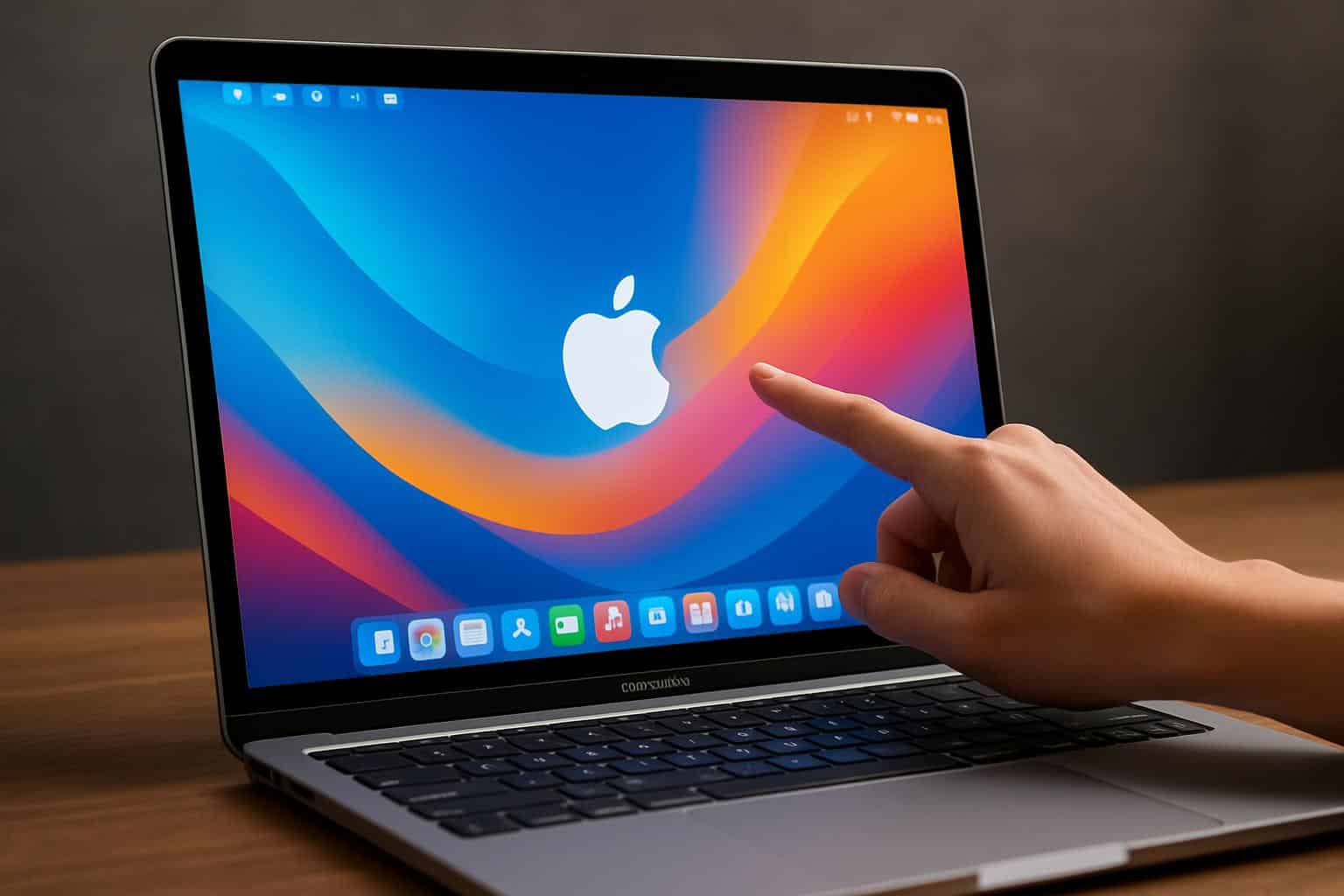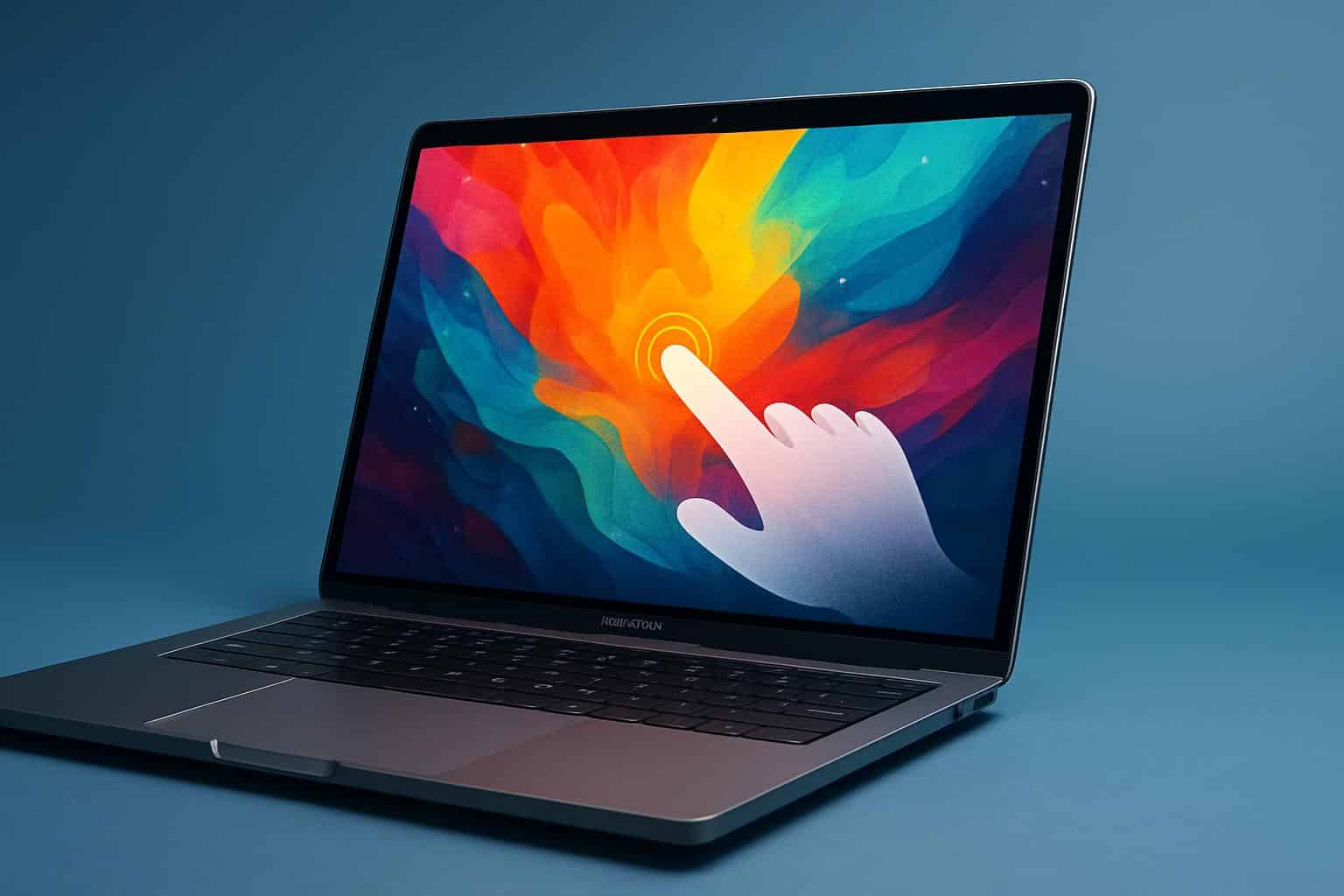Apple is on the verge of adding touch input to the MacBook Pro, reflecting an acknowledgment that the best mobile displays are not only for consumption but for creation. A high-end touchscreen model is in the works and due for release alongside a future generation of Apple Silicon, seen by most as being named M6, according to reporting from Bloomberg’s Mark Gurman.
For a company that has long derided vertical touchscreens as ergonomically suspect, this is a significant change in direction. And it’s about time: You can hardly buy a high-end clamshell Windows laptop that doesn’t also include a touchscreen these days, from the likes of Microsoft and Dell.

How and Why That Touchscreen MacBook Pro Will Happen
Market expectations have shifted. IDC and Canalys analysts have called out strong growth in premium notebooks with high-refresh, OLED screens and touch capabilities, especially in both creative and commercial sectors. Many pro workflows are already ruled by the MacBook Pro; adding touch will close a feature gap, without redefining the product.
There is also a software play you can make. For macOS, there has been a slow inflow of UI components that benefit from direct manipulation — windowing comes to mind in this case, inspired by iPad features — while developers are more and more encouraged to use shared frameworks like SwiftUI or Catalyst. Touch input reduces friction for apps that already exist across iPhone, iPad and Mac.
What the Hardware Might Be Capable Of and Include
Apple is plotting an OLED display for the touchscreen MacBook Pro, Gurman said. The presence of OLED would be a first for the line, potentially delivering perfect blacks, high contrast and greater control over HDR. Facing the screen‑door effect on laptops, OLED also permits thinner lids and potential power savings for dark-heavy workflows, but Apple would require robust anti-burn‑in management and aggressive anti-reflective coatings.
Anticipate a redesigned hinge and display assembly to fight the “wobble” found on many touch-first clamshells. Strengthened mechanics, less torsion and a firmer chassis would help the panel maintain its position under tap and swipe. Gurman also notes that Apple is toying with a hole‑punch camera cutout, axing the notch and maybe giving you more menu bar space.
Beneath the surface, coupling touch with the next Apple Silicon cycle would offer developers unmistakable hardware and performance expectations. In a future M‑series SoC, more neural and graphics headroom can be budgeted for gesture recognition, high‑density touch sampling and UI animation at 120Hz where supported.
Software and UX Implications for macOS Touch Support
Apple’s vintage critique of vertical touch was arm fatigue and tiny interface targets. Resolving that likely involves small macOS touch refinements: larger hit zones on toolbar touches, more forgiving gesture affordances, density flicking based on context when the screen is touched. None of this entails iPadifying the Mac — just letting a little touch tolerance seep into precision UI.
You’re not going to get tablet mode or a detachable display. The trackpad is still a signature strength, and especially useful for pro editing, coding and spreadsheet work. Touch is additive: fast timeline scrubs, annotating PDFs, tweaking vectors, zooming in to photos and navigating sprawling dashboards without leaving the keyboard.

Price and Position in the MacBook Pro Lineup
This MacBook Pro is supposedly a step-up model over a non-touch model that would be priced a few hundred dollars less. That premium is for the OLED panel, strengthened hinge, and reliable supply, likely from those top display vendors: Samsung Display and LG Display. If Apple ditches the notch for a hole‑punch, it has the potential to turn an ongoing design critique into a selling point.
Crucially, it doesn’t make the same mistake as the Touch Bar, which replaced a row of function keys without providing general value. Touch is full screen, and over several apps one finds use for it, but physical keys are retained and the huge Force Touch trackpad pros love.
What It Means for Creators and IT Departments
Touch is like a speed boost for creators. Designers push Bézier curves around on Figma, editors pinch to zoom a timeline in Final Cut Pro, photographers lasso and retouch directly on the canvas. Pencil-grade fidelity is not going to happen on day one, but very high-precision capacitive touch is still better for a lot of micro-interactions.
For the IT buyer, a touch-capable MacBook Pro is consistent with what Windows fleets have conditioned users to expect. It closes the training gap for staff switching between platforms, and could eliminate the need for separate displays or tablets during reviews, whiteboarding and field work.
Open Questions Before Launch of a Touchscreen MacBook
Four areas of variability, with battery life being the biggest; touch layers and OLED drivers have overhead costs as well, though Apple’s ability to control both silicon and display tuning could minimize impacts. Durability — particularly against OLED burn‑in in static UI chrome — will be closely monitored, as will anti-glare performance under studio lights.
There are the input accessories as well. Although there is no indication that the MacBook Pro will support a stylus, developers and artists are going to request it. And pen support or no, a well-designed touch MacBook Pro would have obliterated one of the remaining Apple platform holdouts, as well as sending long-overdue signals that its laptop road map is about to blend some of the best attributes of its mobile and desktop worlds.
Bloomberg’s news, supplemented by years of analyst reports and a past interview with The Wall Street Journal citing internal exploration, suggests we’re talking about a pragmatic Apple: It’s not going to chase the gimmick; it’ll ship touch only once all the display tech, silicon and macOS are ready for it to feel native.

